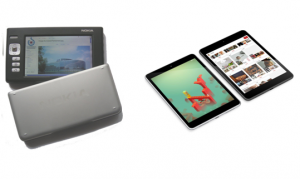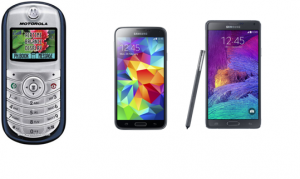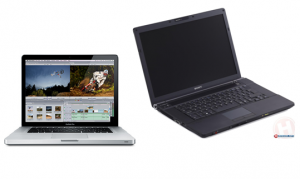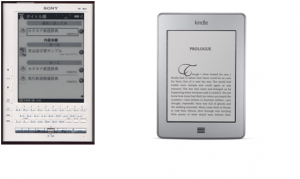How Far Technology Has Come In The Past 10 Years
Cast your mind back: do you remember the days of monophonic ringtones? And clunky tablet prototypes? What about buying your first laptop and thinking that 60GB of RAM was more than you could ever possibly need?
Then you’ll know just how much technology has evolved and adapted in the last 10 years. Technology is growing at a tremendous rate, VR Gaming PCs, such as ones from Fierce PC have seen a huge surge in 2017.
As the demand for the latest smartphone or laptop expands year on year, tech manufacturers have also come under increasing pressure to offer the best gadgets at a competitive price. And from a user perspective, the results have been incredible – tech giants like Apple produce new iPhones every year!
This blog will trace some of the biggest developments in tech over the past 10 decade – so prepare for a trip down memory lane.
- Tablet Computers:
Nokia 770 Internet Tablet (left) Vs. Nokia N1 (right)
You might assume tablet computers are a relatively recent invention, but they’ve actually been around since 2005.
Nokia, the mobile giants, were amongst the first to develop this technology. The Internet Tablet was basic but innovative – featuring 64MB RAM and a 800 x 480 (16-bit) display. The tablet proved popular, but it wasn’t without some widespread criticism. Many reviewers were quick to point out that the Internet Tablet was somewhat slow and lacked the necessary back-up storage to perform properly. It was also quickly apparent that the tablet had a very short battery life – lasting just 4 hours.
Originally, Nokia had planned to release a tablet by as early as 2000. However, there were fears that there was no demand for this product. Little did Nokia know that by 2015, tablet computers would be amongst some of the most popular devices in the world.
Fast forward to 2015, and this technology has come on leaps and bounds. The Nokia N1 is hotly anticipated to be released mid-2015, and will feature an incredible package of features and capabilities. First of all – this small but powerful tablet will have a 2.3GHz processor and 32GB of storage. As a result, the Nokia N1 is even expected to surpass some laptops in terms of performance and speed.
It goes without further explanation that this is a vast improvement from just 10 years ago.
- Mobile phones
Motorola C139 C200 (left) Vs. Samsung S5 (right)
The evolution of mobile phones is probably the most dramatic demonstration of just how much technology has changed in a decade. Gone are the clunky interfaces and lack of entertainment options. Instead, our handheld devices are now capable of so much more than what was popular 10 years ago.
So how exactly have mobiles changed in recent years?
First, even using the term ‘mobile’ seems outdated, given that ‘smartphones’ has been the most commonly used buzzword since 2012. With the ability to perform many of the same actions as a computer, these devices can access the internet, utilise app technology, and send electronic messages.
The new Samsung S5, for example, comes with a 16 megapixel camera and bluetooth capabilities. From a physical standpoint, this smartphone is also noticeably much larger than its predecessor – featuring a 5.1 inch touchscreen technology, but measuring just 0.32 inches wide.
Of course, this is in stark contrast to the mobile phones of 2005. Motorola sold a staggering 35,000,000 models of its C139 C200. Innovative and groundbreaking for the time, this popular device could only maintain call records for up to 10 interactions. And whilst it had the power to download monophonic ringtones, there was certainly no capacity for Radio, GPS, or Email.
In addition to these points, it’s also worth noting how much more robust smartphones are today compared to 10 years ago. There are now a number of android devices on the market that are waterproof. Furthermore, battery life is slowly but surely improving – as the latest offerings from Huawei and OnePlus demonstrate.
With this in mind, who knows how mobile technology will continue to evolve in the next decade.
- Laptops
Sony Vaio VGN – TX670P (left) Vs. Macbook Pro (right)
Laptops are another popular piece of technology that have evolved quickly over the years
This time, we’ll let the stats speak for themselves:
Sony Vaio VGN – TX670P Macbook Pro
RAM: 1GB RAM: 4GB
Storage: 60GB Storage: 500GB
Weight: 2.7lb Weight: 4.5LB
Processor speed: 1.2GHz Processor speed: 2.5GHz
Battery type: 58 Whr Battery type: 63.5 Whr
In just over a decade, laptop technology has evolved at a phenomenal rate. Upon its release, the Sony Vaio was a huge success and set the standard for length of battery life. But what really made this laptop stand out was its portable size – making it perfect for travelling and doing work on the go. This characteristic is undoubtedly something that other laptop manufacturers have sought to emulate ever since.
In 2015, however, some of the most popular laptops have undergone a major transformation. Although the Macbook Pro is somewhat heavier, it has the capacity to perform a much larger range of tasks at a quicker and more efficient rate.
- E-Readers
Sony Reader PRS-500 (left) Vs. Kindle Touch (right)
Perhaps one of the most exciting innovations in the last decade, e-Readers have transformed how we read and store our books.
In 2005, e-Readers were only recent additions to the commercial market. Sony was amongst the first to create this technology that had consumer appeal, and these devices still packed a surprising amount of punch. Users could expect up to 7,500 ‘page turns’ per charge – an impressive feat for the time. However, the PRS-500 had limited storage capacity (64 MiB) and the expansion SD card only contributed an extra 2MiB.
Nowadays, e-Readers have been dramatically reformed. Amazon is perhaps the biggest influencer in this market, having created a range of e-Readers at an affordable price. The Kindle Touch, for example, has 4GB of storage and has a battery life of over 30 hours. This is a substantial development from the e-Readers from 10 years ago – meaning that users can now hold potentially thousands of books on just one device.
Plus, the latest models from 2015 look a lot better than their predecessors.
A decade of technological innovation
The rate at which technology has evolved and transformed in the past ten years has been astounding.
Anyone who remembers the days of carrying around small bricks in their pocket, or using a laptop with limited storage, will appreciate first-hand how much things have changed.
Overall, this evolution can be attributed to a number of factors. But perhaps the biggest change is that high-quality tech has become much more affordable. Tech manufacturers are competing to offer the latest gadget that breaks the market, so consumers now have more choice than ever before.
This blog was written by Rachel Jensen on behalf of itrentals.com, the equipment hire specialists for exhibition and event solutions.









